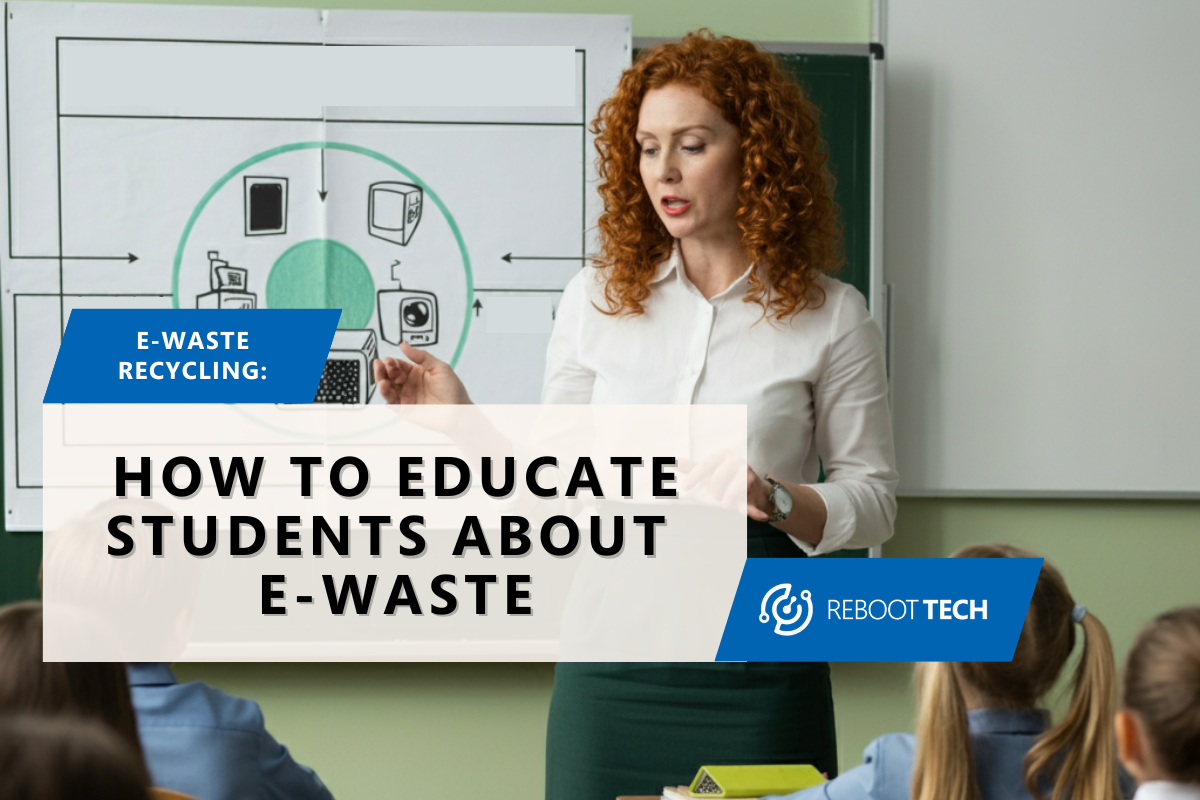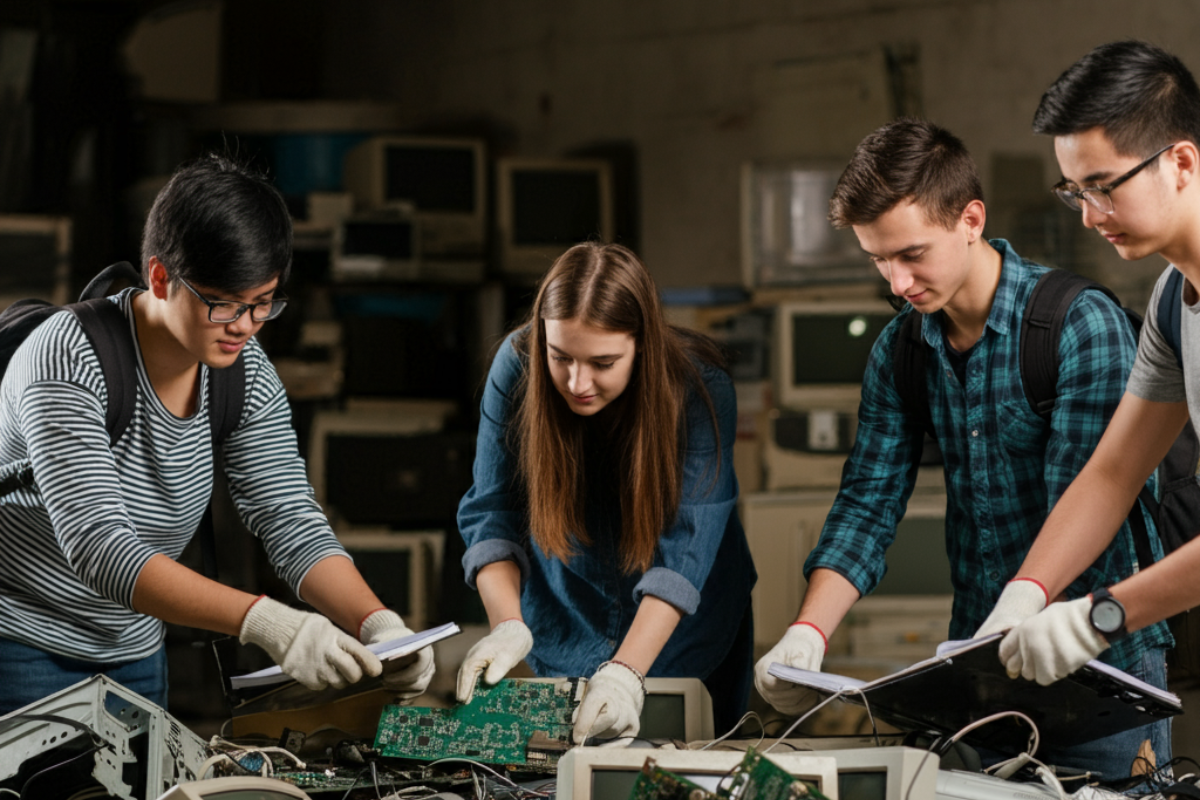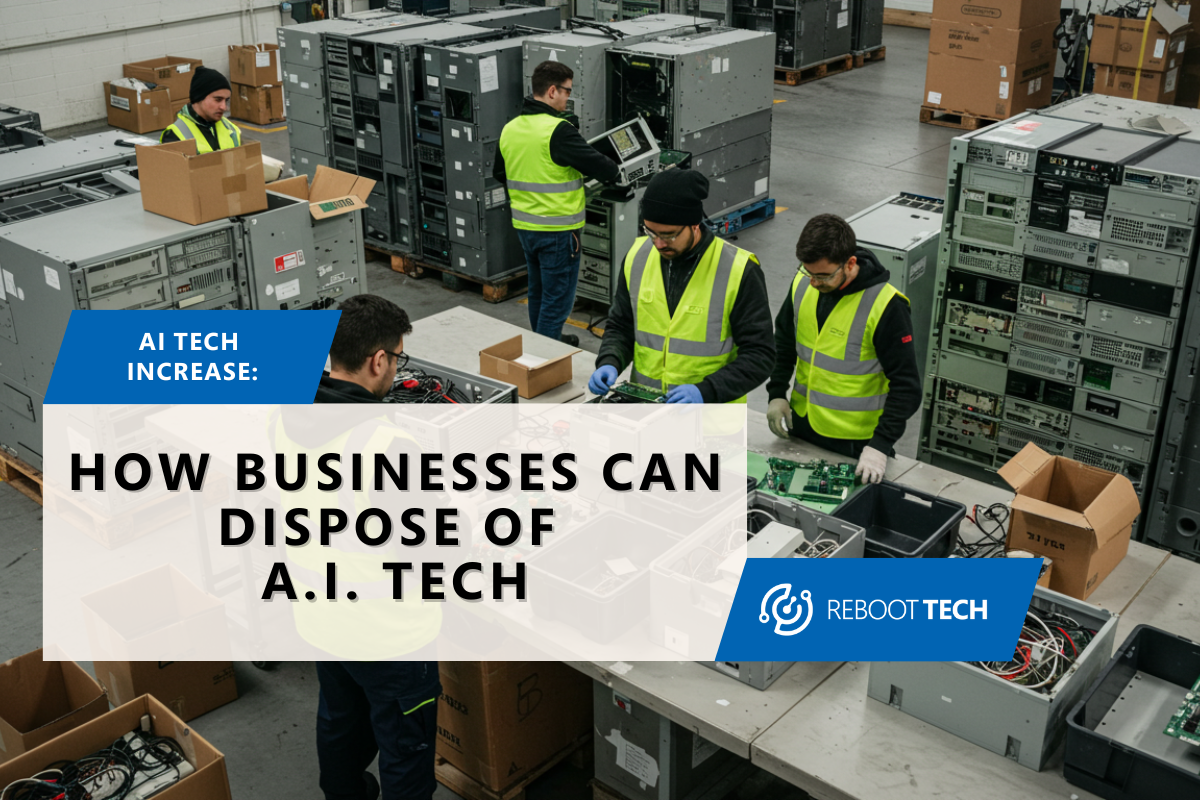
Effective Ways to Educate Students About E-Waste
You might remember being taught about the three R’s—reduce, reuse, and recycle—when you were in school. Recycling plastic bottles and aluminum cans was emphasized as crucial for the environment. But something important was missing from that conversation: electronic waste (e-waste).
As the fastest-growing waste stream in the world, e-waste presents a unique set of challenges, and students today aren’t always taught about it in the same way they learn about other waste streams. Understanding and managing e-waste is critical to a sustainable future, and it’s essential that we start integrating e-waste education into classrooms.
In this article, we’ll explore the importance of e-waste awareness in schools, and helping the next generation. We’ll also discuss the dangers of e-waste, the benefits of educating students on this topic, and offer practical ways that school districts can incorporate e-waste education into their curriculums.
By the end, you’ll have a clearer understanding of how we can raise awareness and inspire future generations to take action. Let’s dive into the importance of e-waste education and how we can better equip students to handle this pressing issue.

The Dangers of E-Waste
E-waste refers to discarded electrical or electronic devices, such as computers, mobile phones, televisions, and household appliances. According to recent reports, in 2022 alone, around 62 million tonnes of e-waste were produced worldwide, and unfortunately, only about 22% of that was formally collected and recycled. This means a massive amount of e-waste is improperly handled, either stored in homes, dumped illegally, or recycled unsafely, posing threats to both the environment and human health.
E-waste contains dangerous chemicals like lead, mercury, and cadmium, which can leak into the environment when the waste isn’t properly managed. Informal recycling practices, such as open burning, release harmful toxins into the air, soil, and water. Pregnant women and children are especially vulnerable to these toxins, which can result in long-term health issues.
Furthermore, many people in low- and middle-income countries work in unsafe recycling conditions, putting their health at significant risk. As we continue to increase our reliance on technology, it’s vital to teach students the dangers of e-waste and how to manage it responsibly.
The Benefits of Educating Students About E-Waste
Educating students about e-waste can have lasting benefits for both individuals and society. When students understand the environmental and health risks associated with improper e-waste disposal, they can make more informed decisions about how they use, recycle, and dispose of their electronic devices. Here are some of the key benefits:
Environmental Awareness
One of the most crucial benefits of teaching students about e-waste is fostering a sense of environmental responsibility. By learning about the environmental impact of electronic waste, students gain insight into the full lifecycle of electronic devices—from the extraction of raw materials to manufacturing, usage, and disposal. This awareness helps students understand how their actions, such as buying and disposing of electronics, directly impact the environment.

Technology Literacy and Skills
Teaching students about e-waste enhances their understanding of the technology they use daily. Through hands-on activities, students can learn about the components of electronic devices and the importance of maintaining and repairing them to extend their lifespan. This not only helps students become more tech-savvy but also fosters critical thinking and problem-solving skills related to technology usage and responsible consumption.
Promoting Responsible Citizenship
Educating students about e-waste encourages them to become responsible citizens who care about the broader implications of their actions. By understanding how e-waste affects ecosystems, human health, and resource depletion, students are empowered to make ethical decisions that contribute to a more sustainable future. E-waste education also fosters advocacy, encouraging students to engage in community clean-ups, awareness campaigns, and initiatives that promote responsible e-waste recycling.
How to Implement E-Waste Education in Schools
Incorporating e-waste education into the curriculum doesn’t have to be complicated. There are several effective and engaging ways to teach students about e-waste. Here are three strategies schools can use to implement e-waste education:
1. Interactive Courses and Hands-On Projects
One of the most effective ways to engage students is through interactive courses and project-based learning. Teachers can introduce lessons on the components of electronic devices and the recycling process, then follow up with hands-on activities. For example, students could disassemble old electronics to learn about the various parts and discuss how to recycle e-waste and repurpose it. These projects help students see the practical side of recycling and give them a better understanding of the complexity of e-waste management.
2. Field Trips to Recycling Centers
Another way to make e-waste education more engaging is by organizing field trips to certified e-waste recycling centers. Students can observe firsthand electronic waste recycling programs, and how it’s dismantled, and recycled, giving them a better appreciation for the recycling process. Field trips allow students to see the impact of their recycling efforts and encourage them to take action in their own communities.
3. Guest Speakers and Workshops
Schools can invite experts in e-waste recycling and environmental sustainability to speak to students about the importance of responsible e-waste disposal. Workshops led by professionals can offer in-depth knowledge and answer any questions students may have. These guest speakers can also introduce students to potential career paths in environmental science and sustainability, making the topic even more relevant to their future.
A Healthier Future
Many people aren’t aware that e-waste is the fastest-growing waste stream in the world. It’s not as visible as plastic bottles or cans lying in the streets, but the impact is just as serious—if not more so. E-waste contains toxic materials that can contaminate the environment and pose risks to human health. But with better education and a greater understanding of the issue, we can make a difference.
By teaching students about the importance of responsible e-waste management, we’re preparing the next generation to tackle one of the most pressing environmental challenges of our time. Schools play a crucial role in raising awareness and empowering students to make informed decisions about their technology usage and disposal. With the right education, we can help ensure a healthier future for our planet.

Recycle with Certified Centers like Reboot Tech
To truly make a difference in the fight against e-waste, it’s important to work with certified e-waste recyclers like Reboot Tech. Certified recycling centers ensure that electronic waste is handled responsibly, minimizing the environmental impact and protecting public health. By recycling with Reboot Tech, you can rest assured that your old electronics are being disposed of in the most eco-friendly way possible.
The journey toward better e-waste management starts with education. By teaching students about the dangers of e-waste and the importance of recycling, we can create a generation of environmentally conscious individuals ready to make a positive impact on the world. Let’s work together to promote responsible e-waste recycling and secure a sustainable future for all.





